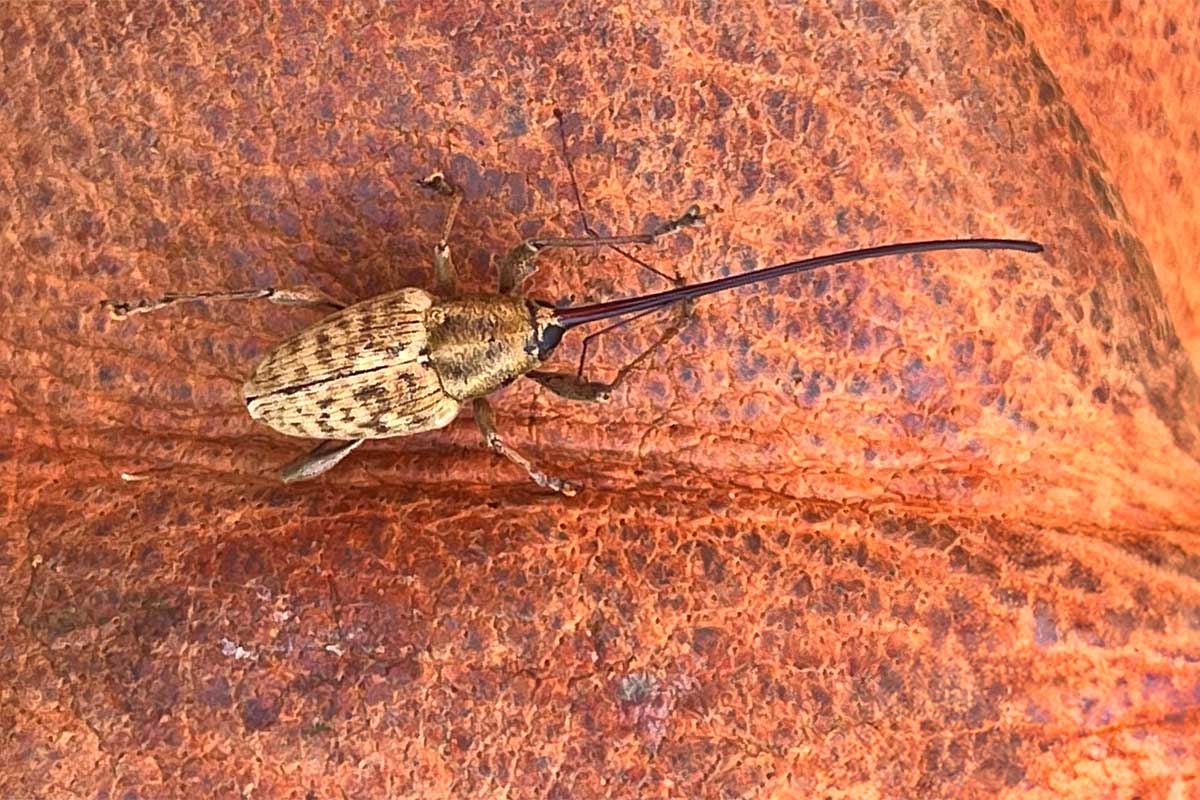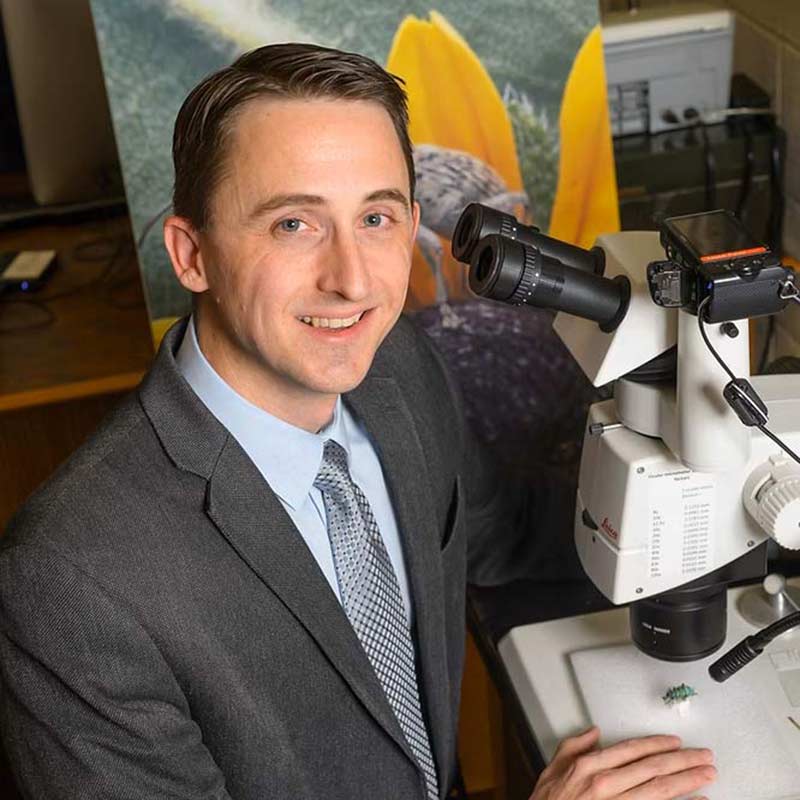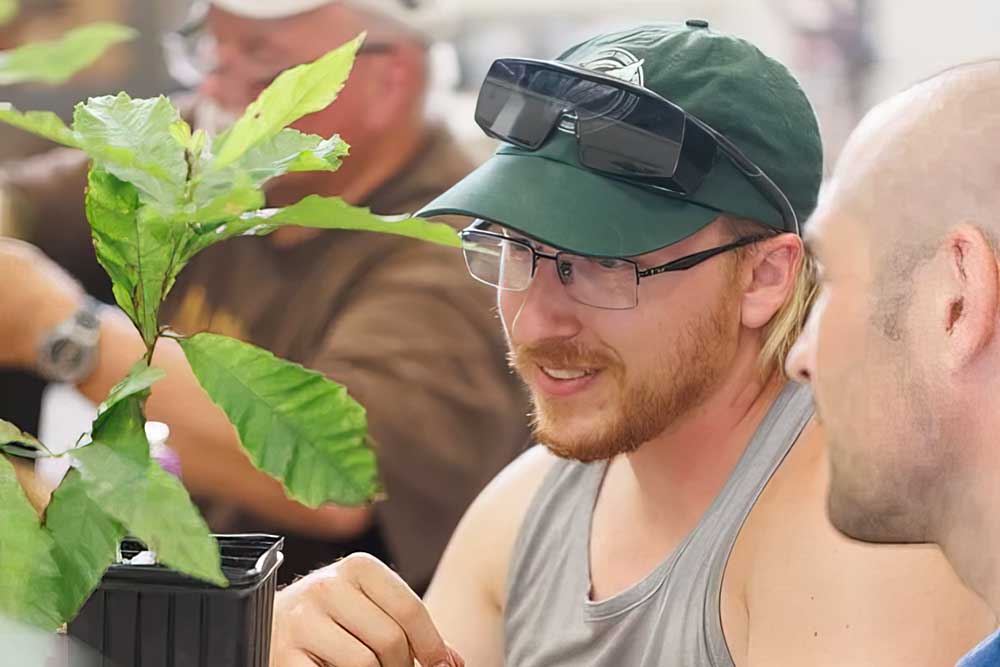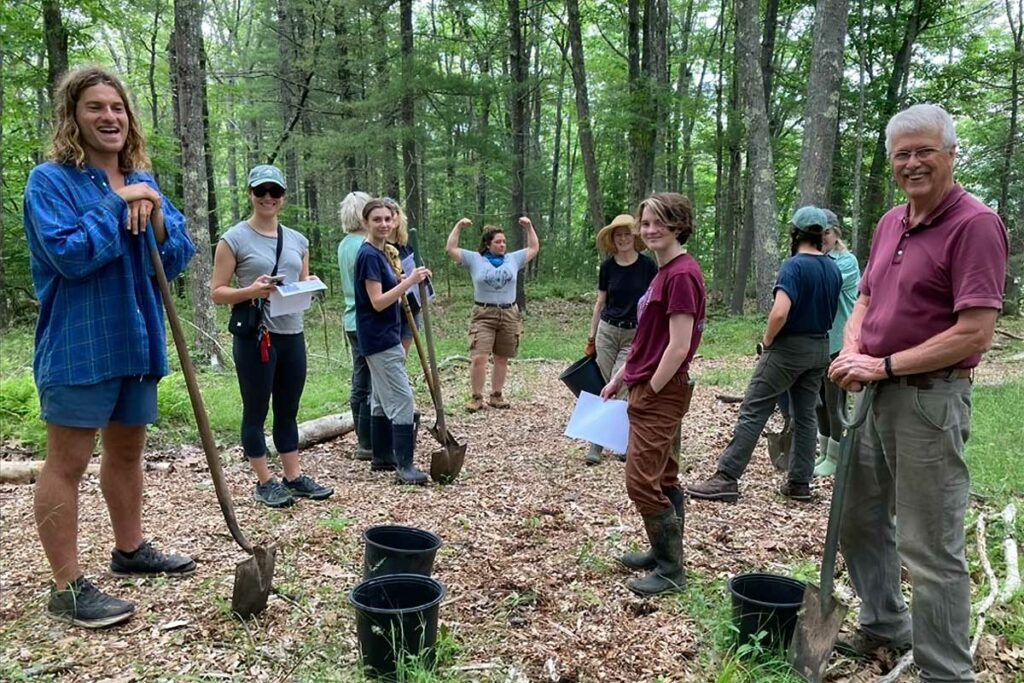
- This event has passed.
Chestnut Chat: Beetle Evolution and the Rediscovery of the Greater Chestnut Weevil


Beetle Evolution and the Rediscovery of the Greater Chestnut Weevil
Special guests Professor Duane McKenna and PhD candidate Michael Charles from the University of Memphis will discuss beetle evolution and the rediscovery of a lost species, the greater chestnut weevil. In the 1900s, an invasive fungal disease wiped out the American chestnut tree and caused many of the insects that depended on it to disappear or die out. One of those insects, the greater chestnut weevil, which was last seen in 1997, was thought to be extinct. But photos posted online in 2022 and 2023 suggest that this weevil might still be alive in at least two places. Over the past 20 years, scientists have used DNA studies to better understand how beetles are related and how they evolved over time. These studies have cleared up old disagreements about beetle relationships, shown that beetles first appeared during the Carboniferous period, and supported the idea that beetles and flowering plants evolved together. Researchers also discovered that beetles got some useful genes from bacteria and fungi, which helped plant-eating beetles—especially groups like leaf beetles, longhorn beetles, weevils, and metallic wood-boring beetles—diversify during the Mesozoic era.
HOW TO PARTICIPATE (via Zoom Webinar)
Pre-registration is required to attend this event. Pre-register here. After registering you will receive a unique URL link to join the event on the day of the chat. You can also add the event to your calendar from the webinar registration approval page. The meeting will open 15 minutes prior to the start time to allow an audio and video test.

Professor Duane McKenna, University of Memphis

Michael Charles, PhD candidate, University of Memphis
Abstract from Duane McKenna
Over the last 20 years, molecular phylogenetic studies have largely resolved the higher-level phylogeny of beetles and timing and rates of beetle diversification. Along the way, these studies have resolved previously contentious beetle relationships, dated the origin of beetles to the Carboniferous, and supported the hypothesis of beetle and angiosperm co-diversification. This research has also revealed that genes acquired from bacteria and fungi via horizontal gene transfers played a crucial role in the Mesozoic diversification and convergent trophic evolution of herbivorous beetles, particularly the clades Phytophaga (leaf beetles, longhorn beetles, and weevils) and Buprestidae (metallic wood-boring beetles). In this talk I will share results from my research on the evolution and genomic basis of beetle diversity, with a focus on plant-feeding. I will also discuss how—through collaboration with other entomologists worldwide—we are using genomic data to explore the evolution of beetle genome architecture and specialized herbivory, linking macroevolutionary patterns with biological form, function, and phenotype.
Abstract froom Michael Charles
The introduction of invasive fungal pathogens led to the 20th-century functional extinction of the American chestnut (Castanea dentata) and the decline or extinction of several of it specialized insect associates. Last collected in 1997, the greater chestnut weevil (Curculio caryatrypes), the largest species of acorn weevil in North America, and a host-specialist on American chestnut, has been presumed extinct for nearly 3 decades. However, photos posted on social media in 2022 and 2023 suggested the persistence of the weevil in at least two localities. Because the photos came to our attention during the winter of 2023-24, at which time adults were no longer present, larvae were collected from nuts found underneath hybrid chestnut trees at both locations for rearing and two larvae from each site were used for DNA sequencing. The larval DNA sequences were compared to 11 other Curculio species, including two pinned adult specimens of the greater chestnut weevil, and two other Curculionini. In the resulting phylogeny, the four larvae of purported greater chestnut weevil formed a single clade along with historical (museum) specimens of this species with maximal bootstrap support.


